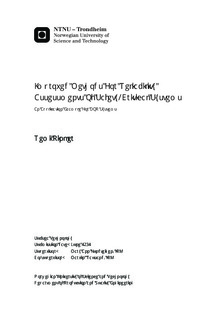Improved Methods For Reliability Assessments Of Safety-Critical Systems: An Application Example For BOP Systems
Abstract
A blowout preventer is a safety critical system that is used during drilling and well interventions of oil and gas wells to make sure the operations are safe. The main function of a blowout preventer system is to seal the well in order to prevent a blowout. There are several different blowout prevent stack configurations in use, and each of these configurations have their pros and cons. Giving an accurate representation of the reliability of a blowout preventer system can be challenging. A blowout preventer goes through many different operational situations, and the BOP`s ability to act as a safety barrier will vary for each of these situations. Giving an average estimate of the BOP`s ability to function on demand is therefore not an adequate reliability parameter. The main objective of this master thesis is therefore to propose a new and improved method for reliability assessment of blowout preventer systems. A new approach to reliability assessment of blowout preventers is presented in this thesis. To account for the sequence of events, a fault tree analysis is combined with an event tree analysis. Fault tree analyses are performed to calculate the PFD for each of the branches in the event tree. The probability of each of the end states in the event tree can then be calculated. This will give a more accurate result then a fault tree analysis on its own. Separate analyses are made for the two main operational situations. One for the operational situations “open hole” and another for the operational situation “drill pipe going through the BOP”. Having two separate analyses gives a more accurate representation of the reliability at the given times, because the barriers in effect vary depending on what operational situation the BOP is going through.
